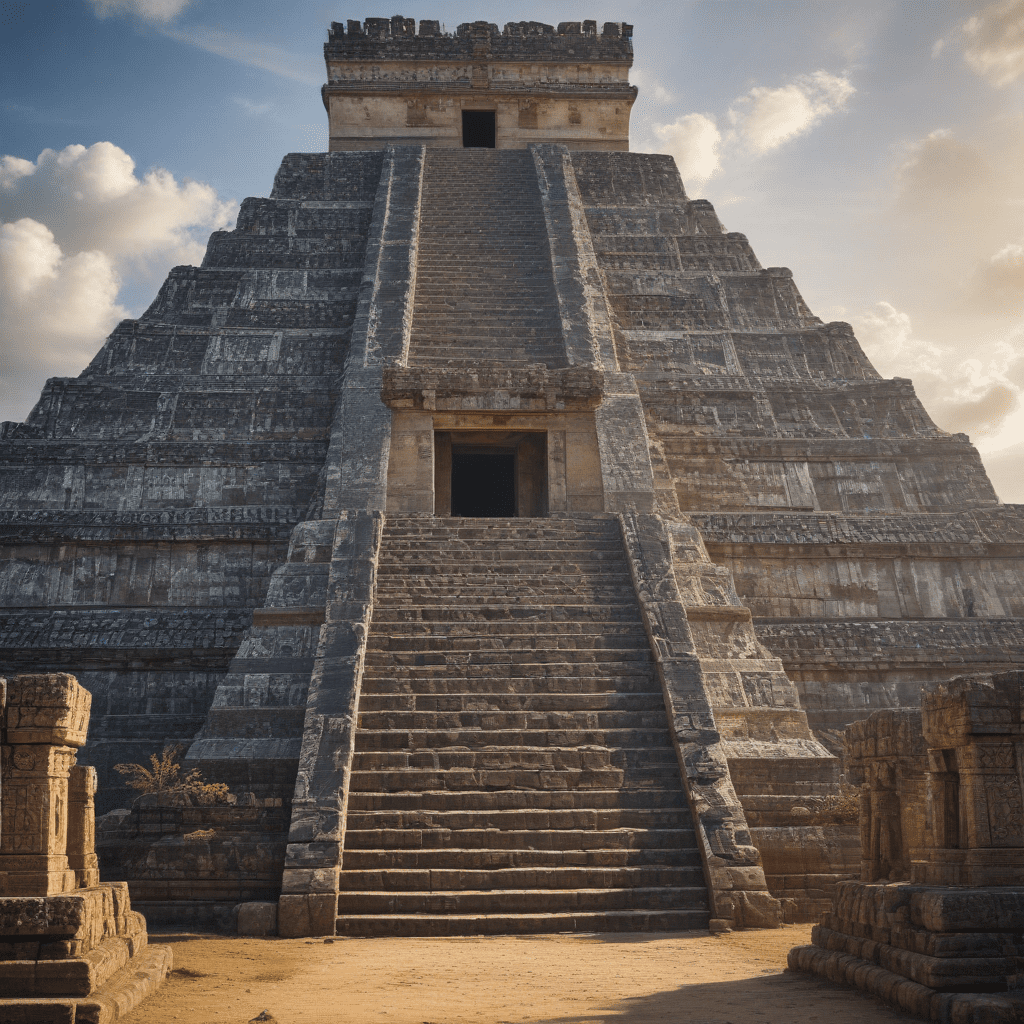The Sacred Tides: How Mythology Interprets Water’s Flow
I. Introduction
Water has been a fundamental element in human culture since the dawn of civilization. It is not only essential for survival but also a powerful symbol in various belief systems around the world. Myths and stories about water often reflect humanity’s relationship with this vital resource, illustrating how it shapes and is shaped by human experience.
The intersection of mythology and natural elements like water offers a rich tapestry of stories that explore themes of creation, destruction, life, and death. By delving into these narratives, we can gain a deeper understanding of how different cultures interpret the flow of water and its significance in their lives. This article aims to explore the multifaceted nature of water through the lens of mythology, examining its symbolic meanings across various cultures.
II. The Element of Water in Mythology
A. Water as a symbol of life and death
Water is often seen as a source of life; it nourishes crops, sustains animals, and is crucial for human survival. However, it is also associated with death and destruction. Floods and tsunamis can devastate communities, reminding us of water’s dual nature. In mythology, this duality is prominently featured, illustrating both the nurturing and destructive aspects of water.
B. Cultural variations in the perception of water
Different cultures have unique perspectives on water that reflect their environments and experiences:
- Indigenous Cultures: Many indigenous groups view water as a sacred gift, integral to their spirituality and identity.
- Eastern Philosophies: In Hinduism and Buddhism, water symbolizes purity and is often used in rituals for cleansing and rebirth.
- Western Traditions: In Christian contexts, water represents both life (baptism) and chaos (the Great Flood).
C. The duality of water: nurturing vs. destructive
This duality is encapsulated in numerous myths that portray water as both a life-giving force and a harbinger of chaos. The understanding of water’s duality helps societies develop respect and reverence for this powerful element.
III. Creation Myths and Water
A. Water in various creation myths (e.g., Enuma Elish, Genesis)
Water plays a central role in many creation myths. In the Babylonian myth of the Enuma Elish, the universe is formed from the primordial waters. Similarly, in the Genesis account of the Bible, the Spirit of God moves over the waters before creation begins. These narratives highlight water as a fundamental element in the genesis of life.
B. The role of water in the formation of the world
In many traditions, water is seen as a chaotic force that precedes the order of creation. It symbolizes the potential for life and the transformative power needed to shape the world.
C. Deities associated with water in creation stories
Water deities often emerge in these narratives, embodying the qualities of water. For instance, Tiamat in Babylonian mythology personifies the saltwater ocean, while in Hinduism, Vishnu is said to rest on the cosmic ocean before creation.
IV. Water Deities Across Cultures
A. Overview of prominent water deities (e.g., Poseidon, Yam, Varuna)
Throughout history, cultures have personified water through deities:
- Poseidon: The Greek god of the sea, earthquakes, and horses, representing the power and unpredictability of the ocean.
- Yam: In Canaanite mythology, Yam is the god of the sea, associated with chaos and the primordial waters.
- Varuna: A Hindu deity of water and the celestial ocean, symbolizing order and cosmic law.
B. Attributes and stories associated with these deities
These water deities are often depicted with specific attributes that align with their cultural significance. For example, Poseidon wields a trident, symbolizing his control over the seas, while Varuna is often shown with a noose to capture wrongdoers.
C. The impact of these figures on cultural practices and beliefs
Water deities have influenced various cultural practices, including rituals, festivals, and prayers. They often serve as reminders of humanity’s need to respect and coexist with water.
V. Rivers and Their Mythological Significance
A. Sacred rivers in different mythologies (e.g., Ganges, Nile)
Rivers often hold sacred status in many cultures. The Ganges in India is revered as a goddess, while the Nile was essential to ancient Egyptian civilization, symbolizing fertility and life.
B. Symbolism of rivers as pathways to the afterlife
In many traditions, rivers symbolize the passage between life and death. The River Styx in Greek mythology is a boundary between the living and the dead, where souls are ferried to the underworld.
C. Rituals and traditions centered around rivers
Rituals associated with rivers often involve purification, offerings, and prayers. For example, the Kumbh Mela in India is a significant pilgrimage where millions bathe in the Ganges to cleanse their sins.
VI. The Ocean in Mythological Narratives
A. The ocean as a vast unknown and source of peril
The ocean often represents the unknown, filled with mysteries and dangers. Mythologies frequently include tales of sailors facing storms and sea monsters, symbolizing humanity’s struggle against nature.
B. Myths of sea monsters and guardian spirits
Creatures such as Leviathan in Judeo-Christian lore and Scylla and Charybdis in Greek mythology illustrate the ocean’s dangers, while guardian spirits like the Hawaiian goddess Kanaloa protect those who respect the sea.
C. Exploration of maritime mythology and its heroes (e.g., Odysseus, Sinbad)
Maritime myths often feature heroes who navigate the treacherous waters, such as Odysseus in Homer’s “Odyssey” and Sinbad in the Arabian Nights. These stories reflect human resilience and ingenuity in the face of nature’s challenges.
VII. Tides and Cycles: A Mythological Perspective
A. The significance of tidal movements in various cultures
Tides are often viewed as symbols of cyclical change. Many cultures have myths explaining the origin of tides, linking them to celestial bodies or deities.
B. Myths explaining the origin of tides (e.g., lunar connections)
The connection between the moon and tides is a common element in mythology. In some cultures, the moon is personified as a goddess whose movements control the waters.
C. The cyclical nature of water and its reflection in mythology
The cyclical nature of water—its ebb and flow—mirrors life’s rhythms, reinforcing themes of rebirth and renewal in various mythologies.
VIII. Water as a Transformative Element
A. Myths showcasing metamorphosis through water (e.g., baptism, rebirth)
Water is often a transformative element in myths. The act of baptism symbolizes spiritual rebirth, while numerous myths depict characters undergoing profound changes when submerged in water.
B. Water in healing and purification practices
Many cultures utilize water in healing rituals, believing it possesses purifying qualities that can cleanse the spirit and body. This belief is evident in practices involving sacred springs and ritual baths.
C. The role of water in rites of passage
Water often plays a crucial role in rites of passage, marking significant life transitions such as birth, adulthood, and death, symbolizing the journey through different phases of existence.
IX. Contemporary Interpretations of Water Mythology
A. How modern cultures retain ancient water myths
Many contemporary cultures continue to honor ancient water myths, integrating them into rituals and storytelling. Awareness of these stories can foster a deeper connection to water and its significance.
B. The influence of mythology on environmental awareness
Mythological narratives about water remind us of the importance of preservation and respect for natural resources. They inspire environmental movements aimed at safeguarding water bodies and ecosystems.
C. The relevance of water myths in a changing world
As climate change and environmental degradation threaten water sources globally, the timeless lessons embedded in water mythology can guide contemporary societies towards sustainable practices and reverence for this essential element.


